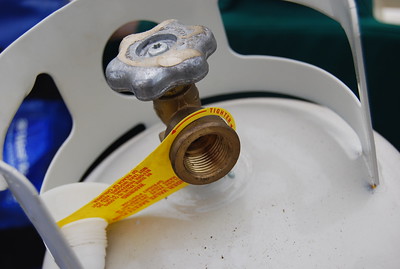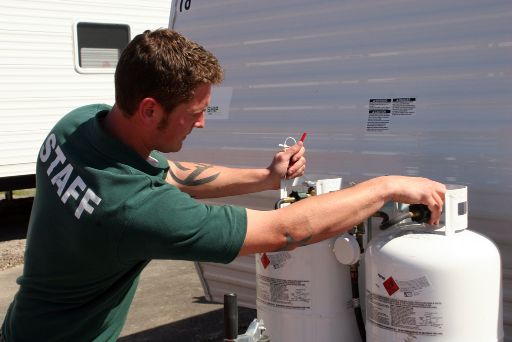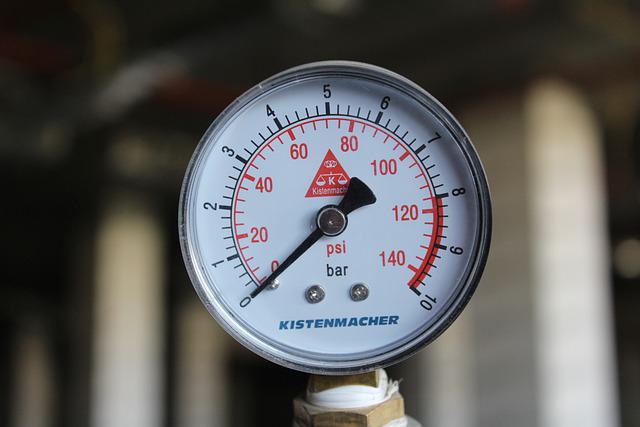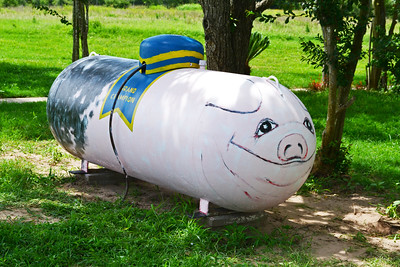
Propane tanks are essential components of many outdoor and household appliances, from grills and heaters to RVs and generators. However, as with any other equipment, propane tanks can become outdated or require replacement. In particular, non-OPD (Overfill Prevention Device) valve propane tanks have become a concern for many users. This article will explore the regulations and practicalities surrounding non-OPD valve propane tanks, addressing whether you can exchange them and what steps you need to take to ensure your propane system is safe and compliant.
In response to growing concerns about propane tank safety, the National Fire Protection Association (NFPA) introduced new standards in the late 1990s. These standards mandated the installation of Overfill Prevention Devices (OPDs) on all propane tanks with a capacity between 4 and 40 pounds. OPDs are designed to prevent overfilling and minimize the risk of propane leaks, fires, and explosions.
The deadline for OPD compliance was set for April 1, 2002, meaning that any propane tank manufactured or recertified after this date must be equipped with an OPD valve. Non-OPD valve propane tanks are now considered outdated and unsafe, and their use is strictly prohibited in most jurisdictions across the United States.
Can You Exchange a Non-OPD Valve Propane Tank?
In short, no, you cannot exchange a non-OPD valve propane tank at most propane exchange facilities or retailers. Since non-OPD valve tanks are considered unsafe and do not meet current safety standards, most exchange programs will not accept them. In some cases, a non-OPD valve propane tank might be accepted for recycling or disposal, but not for exchange. While propane tank exchange programs are a convenient way to replace empty tanks with filled ones, the tanks you receive in exchange may not always be completely full.
What to Do with a Non-OPD Valve Propane Tank
If you have a non-OPD valve propane tank that you need to replace or dispose of, here are some options:
- Upgrade the valve: In some cases, it may be possible to upgrade your non-OPD valve propane tank by replacing the old valve with an OPD valve. This process should be performed by a qualified technician or propane service provider, as it requires specialized knowledge and tools. Once the valve has been replaced and the tank has been recertified, you can use it or exchange it as you would any other compliant propane tank.
- Recycle the tank: Many communities and local waste management facilities offer propane tank recycling programs. These programs will accept non-OPD valve propane tanks, ensuring that they are properly disposed of in an environmentally friendly manner. Be sure to contact your local waste management facility to inquire about their propane tank recycling procedures.
- Dispose of the tank safely: If recycling is not an option in your area, you may need to dispose of your non-OPD valve propane tank as hazardous waste. Again, contact your local waste management facility to learn about the proper procedures for disposing of hazardous materials.
How Do I Know if Propane Tank Has a OPD Valve?
Identifying whether your propane tank has an OPD (Overfill Prevention Device) valve is relatively simple. Here are some key features to look for that will help you determine if your propane tank is equipped with an OPD valve:
- Triangular handle: OPD valves typically have a triangular-shaped handwheel on top of the valve. This is a distinctive feature that sets them apart from non-OPD valves, which generally have round or star-shaped handles.
- Valve marking: Most OPD valves are clearly marked with the letters “OPD” stamped or engraved on the valve itself. This marking serves as a clear indication that the valve is equipped with an overfill prevention device.
- Date of manufacture: OPD valves became mandatory for propane tanks with a capacity between 4 and 40 pounds in the United States after April 1, 2002. If your propane tank was manufactured or recertified after this date, it should have an OPD valve. You can typically find the manufacturing or recertification date stamped on the collar of the propane tank.
- Left-hand thread: OPD valves have a left-hand thread, meaning that they tighten counterclockwise and loosen clockwise. This is another distinct feature that differentiates OPD valves from older, non-OPD valves.
- Flat indentation: Some OPD valves also have a flat, circular indentation on the side of the valve, which is another characteristic feature that sets them apart from non-OPD valves.
By checking for these key features, you can easily determine whether your propane tank is equipped with an OPD valve. If you’re still unsure, you can consult a propane service professional to confirm whether your tank meets the required safety standards.
Are all propane tank valves the same?
No, all propane tank valves are not the same. There are several types of valves used in propane tanks, each designed for specific applications and purposes. While some valves may share certain features, they can differ in their functionality, design, and safety features. Here are some common types of propane tank valves:
- OPD (Overfill Prevention Device) Valve: As mentioned earlier, OPD valves are mandatory for propane tanks with a capacity between 4 and 40 pounds in the United States. They are designed to prevent overfilling and reduce the risk of propane leaks, fires, and explosions.
- POL (Prest-O-Lite) Valve: The POL valve is an older type of propane tank valve, typically found on tanks manufactured before the introduction of OPD valves. POL valves have a reverse-threaded, male connector and require a wrench to tighten or loosen. Although still in use, they are less common than they once were and are being phased out in favor of OPD valves.
- Acme Valve: Acme valves, also known as Type 1 or QCC (Quick Closing Coupling) valves, are an alternative to the OPD valve. They are designed for ease of use, featuring a large, hand-tightened coupling nut that does not require tools to connect or disconnect. Acme valves are compatible with OPD-equipped tanks and are also designed to prevent overfilling.
- Forklift Valve: Forklift valves are specifically designed for use in forklift propane tanks. These valves have a different connection system and are equipped with an internal excess flow check valve, which helps to prevent propane leaks in the event of a hose rupture.
- Multi-Valve: Multi-valve systems combine the functionalities of fill, service, and relief valves into a single unit. These valves are commonly found on larger propane tanks, such as those used for residential or commercial applications.
- Bleeder Valve: This valve is used to release excess pressure from the tank during filling. It is not the main valve but is found on some propane tanks to ensure safe filling.
While there are other specialized valves and fittings for various propane applications, these are some of the most common types of propane tank valves. It is important to know the differences and use the appropriate valve for your specific propane tank and application to ensure safe and efficient operation.
Conclusion
The safety of your propane system is of paramount importance, and using an outdated non-OPD valve propane tank poses significant risks. To ensure that you are in compliance with current safety standards, always use an OPD-equipped propane tank and dispose of any non-OPD valve tanks according to local regulations. By taking these precautions, you can enjoy the many benefits of propane appliances while minimizing the risks associated with propane usage.

Mike is an experienced propane technician with over 15 years of professional experience in the field. He has dedicated his career to helping customers with their propane needs, from installation to maintenance and repair. Together with Jeremy, he co-founded this website to provide useful information and guidance to customers seeking reliable propane services.




